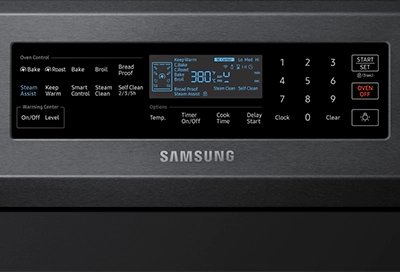
Error codes, like the F1 you see on your Samsung oven or range, are essentially the appliance’s way of alerting you that something isn’t right. Think of it as your oven trying to speak a language we can understand—albeit a bit robotic. Usually, this specific code relates to a problem with the oven’s temperature sensors, which is crucial for maintaining the right heat levels. Just like a thermostat in your home, if the oven’s temperature sensor isn’t functioning correctly, you could end up with undercooked or burnt meals. But don’t worry, with a little patience and guidance, this issue can be tackled.
Understanding Error Code F1
So, what exactly is going on when F1 shows up? Here’s the deal: it typically indicates an issue with the oven’s temperature sensor or the electronic control board. Imagine the temperature sensor as the oven’s internal thermometer. If this sensor starts sending incorrect signals, for instance, indicating it’s hotter (or cooler) than it actually is, the oven could misbehave. That’s where the F1 error comes into play, alerting you to this discrepancy.
Most of the time, the F1 code suggests that the oven’s control board is receiving faulty signals from the temperature sensor due to a malfunction or a bad connection. It’s akin to how a bad internet connection can cause communication issues between your smartphone and the Wi-Fi. Similarly, the control board and sensor must be in perfect sync to work correctly. When they aren’t, that’s when the F1 code lights up.
Now, you may have some questions: Can you still use the oven with this error? Is it dangerous? While your oven might still function, it’s not advisable to use it without addressing the problem. Cooking with a malfunctioning sensor can lead to uneven cooking results, which nobody wants. Plus, there’s the potential risk of overheating, which could be dangerous.
Common Causes of the F1 Error
You might be curious about what causes this pesky error to appear in the first place. Several factors can lead to the F1 code. A common cause is a faulty temperature sensor, which might be due to wear and tear over time. Just like how electronic gadgets can degrade with use, oven components are no exception. If the sensor gets worn out, it might start sending wrong signals to the control board.
Another potential cause could be issues with the wiring. If there are loose or frayed wires connecting the temperature sensor to the control board, it can disrupt communication, much like how static on a phone call can confuse the conversation. Ensuring all connections are secure and intact is crucial for the appliance to function properly.
Occasionally, the problem could stem from the control board itself. If it becomes defective, it might misinterpret the temperature data and flag an error. Imagine trying to follow a recipe when the measurements are all wrong; it can lead to chaos in the kitchen. Addressing issues with the control board can sometimes resolve the F1 error.
How to Troubleshoot and Fix F1 Error
Feeling up to a bit of DIY troubleshooting? Don’t worry, it’s not as daunting as it sounds. Start by resetting your oven. Just like rebooting a computer can often clear minor issues, a reset might work wonders here. Turn off the oven by unplugging it or switching off the circuit breaker, wait a few minutes, and then power it back on. This might clear out any transient errors causing the F1 code.
If that doesn’t do the trick, you may want to check the temperature sensor itself. You can locate the sensor inside the oven, usually located at the back. Ensure it’s properly connected and that the wires are intact. If you notice any visible damage, you might need to replace the sensor. Replacement sensors are typically available from the manufacturer or local appliance stores.
If all else fails, it might be time to call in a professional. For more complex issues, especially those involving the control board, having an experienced technician can be invaluable. They’ll have the tools and expertise to diagnose and fix the problem safely.
Preventing Future Error Codes
Preventative maintenance can go a long way in keeping your Samsung oven or range running smoothly. Regular cleaning and inspections can help avoid some common issues that lead to error codes. For starters, ensure that vents and fans are clear of debris that could affect airflow and temperature regulation. Picture how a clogged drain slows water flow; similarly, blocked vents can impede your oven’s performance.
Also, pay attention to how often your oven cycles on and off during use. If it’s happening more frequently than usual, it might be a sign that something’s not right and needs checking. Maintaining a regular appliance check-up schedule can help spot potential issues before they become serious problems.
In conclusion, encountering an F1 error on your Samsung oven or range might feel like a bump in the road while cooking, but understanding the cause and taking appropriate steps can get you back on track. With regular care and timely repairs, your oven can continue to be a trusted ally in your culinary adventures.